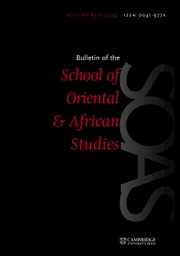Foreword
Since the time of Edward Said and Talal Asad, if not before, we have known that the Western view of “the Orient” – from the Near East to Japan – is an intellectual construct. In addition, the “Christian occident” has been used as a politically charged term. This “Occidentalism”, like its bedfellow Orientalism, has become the focus of much debate. The geopolitical consequences of this confrontation seem obvious and culminate in Samuel Huntington's thesis of a “Clash of Civilizations” based on essentialized religious differences. But the concepts of Orient and Occident are not, and have never been, homogeneous. Nor have they been formed, nor do they continue to evolve, without mutual interaction. The global interdependence we witness today – often labelled “globalization” – is nothing new and in fact has its origin in the formative phases of the major cultural and religious traditions of the world.
This understanding has served as a point of departure for the research conducted at the Käte Hamburger Collegium for the study of “Dynamics in the history of religions” at Ruhr-Universität, Bochum. An interdisciplinary undertaking involving classical philology, Protestant and Catholic theology, South Asian studies, Jewish studies, Islamic studies, Chinese, Korean, and Japanese studies, history, comparative religion and philosophy, the Collegium has focused on the origin and development of the major religious traditions by stressing contact and exchange, beyond stereotypes and ideological misuse. Our basic thesis is that the major religious traditions form, establish and develop in an environment of mutual dependency and exchange. The interconnection of self-perception and perception of self by the other, of adaptation and demarcation, and of internal differentiation within traditions are, for those at the Collegium, a fundamental constituent of religious and historical dynamics.
The papers in this volume – collected and edited by Michael Willis of the British Museum – developed from a workshop he organized while a Visiting Research Fellow at Bochum. At a glance they show the profound and far-reaching exchange of people, texts, ideas, and ritual practices across Asia from early times. The papers not only add to our knowledge of a special category of Buddhist texts and the theoretical tools that can be deployed to understand them, but show that Buddhist hermeneutics and text-ritual practice evolved in a vast interactive network that spanned several regions, languages, kingdoms and cultures. Religious interaction over macro-regions is normally perceived as a relatively new or modern phenomenon, but the materials presented here show us that such encounters go back more than a thousand years. The fascinating diversity and complexity of this religious discourse, when examined comprehensively, leave little doubt that nationalist, linguistic and sectarian frameworks will no longer serve. Michael Willis' work helps address the distortions created by these frameworks and, as director of the research consortium, I am grateful to him for teaming up with us to expand our horizons through this special field. It is also my pleasant duty to express my thanks to the German Federal Ministry of Education and Research for generously funding the consortium and making its work possible.


